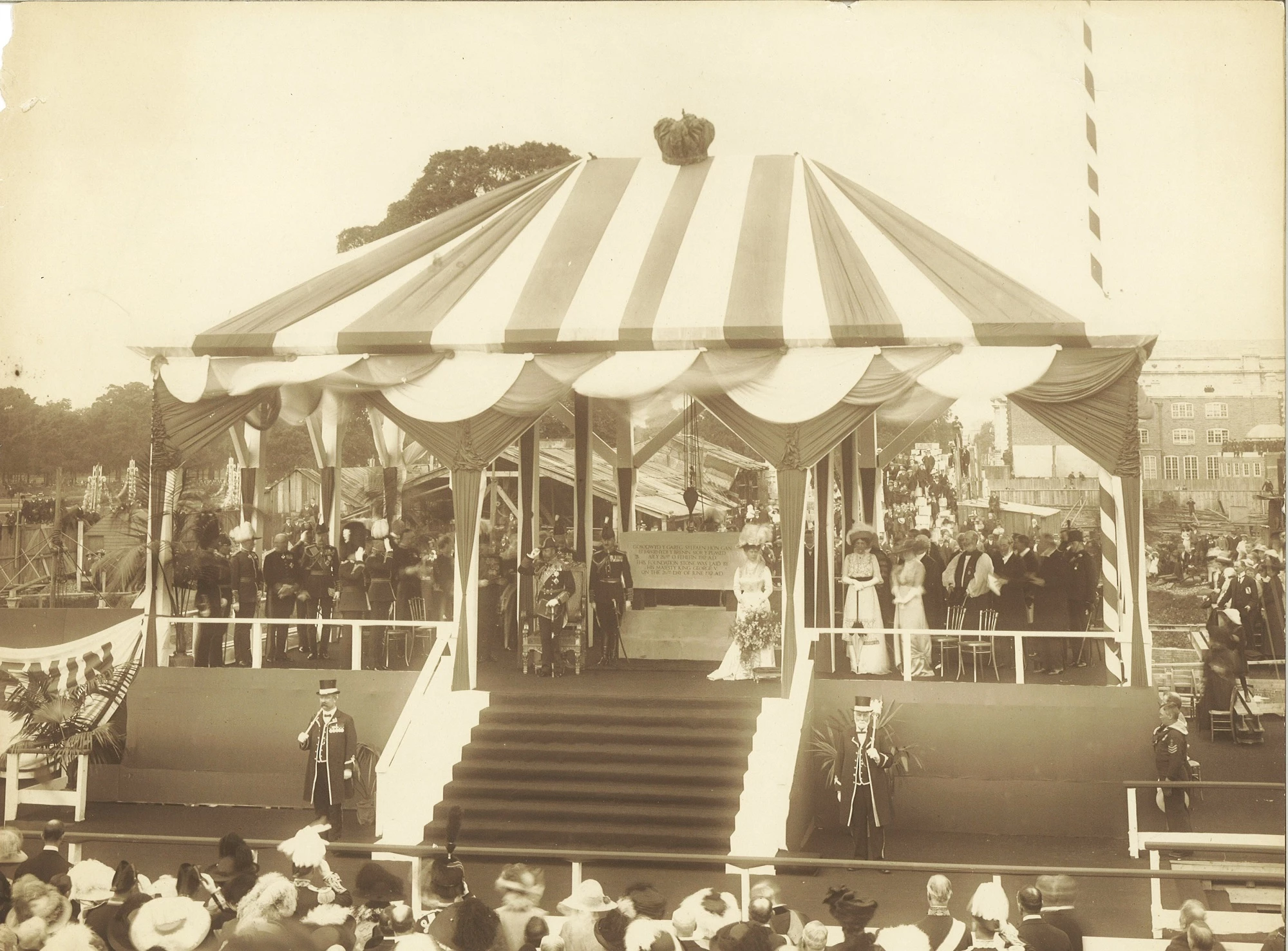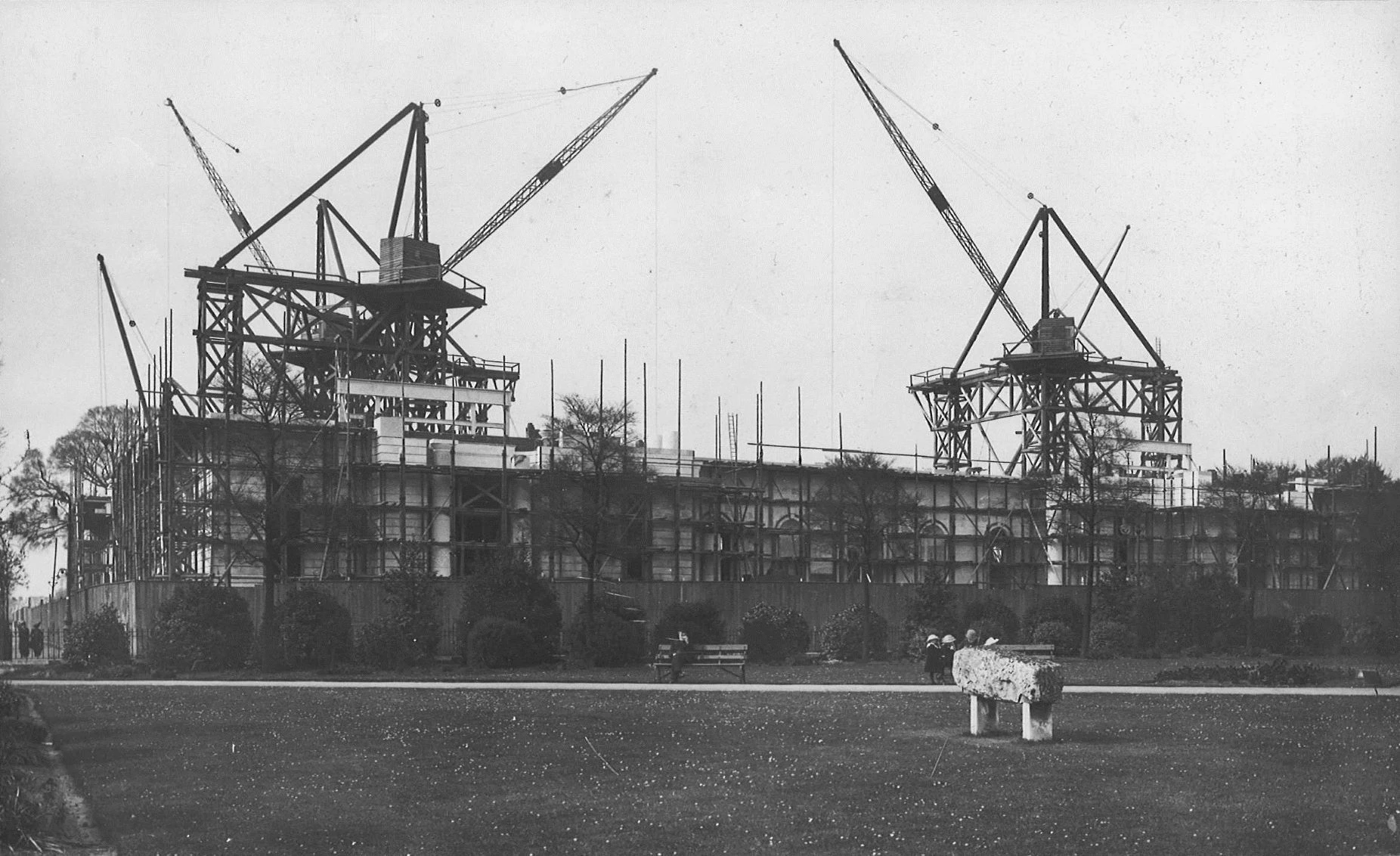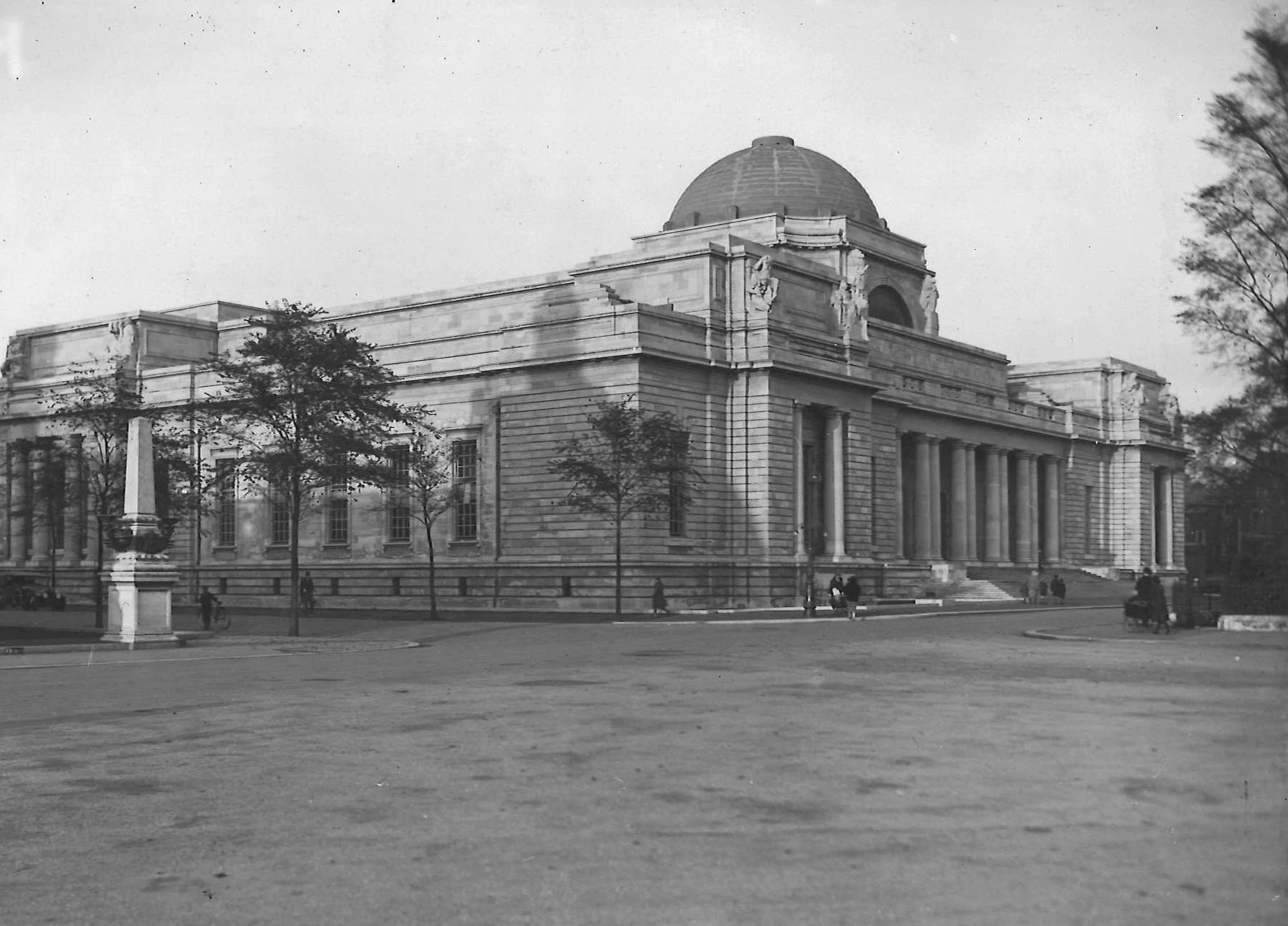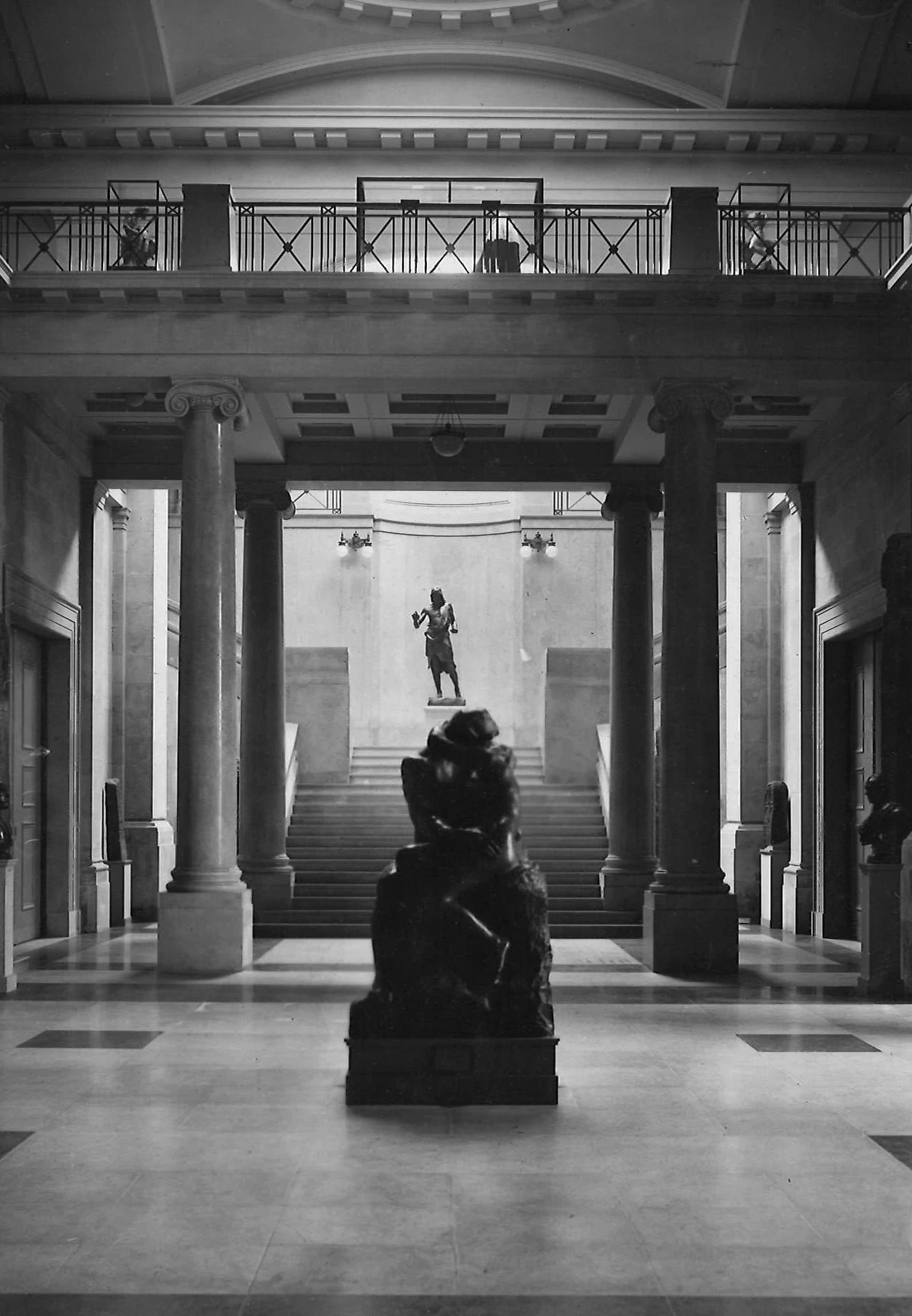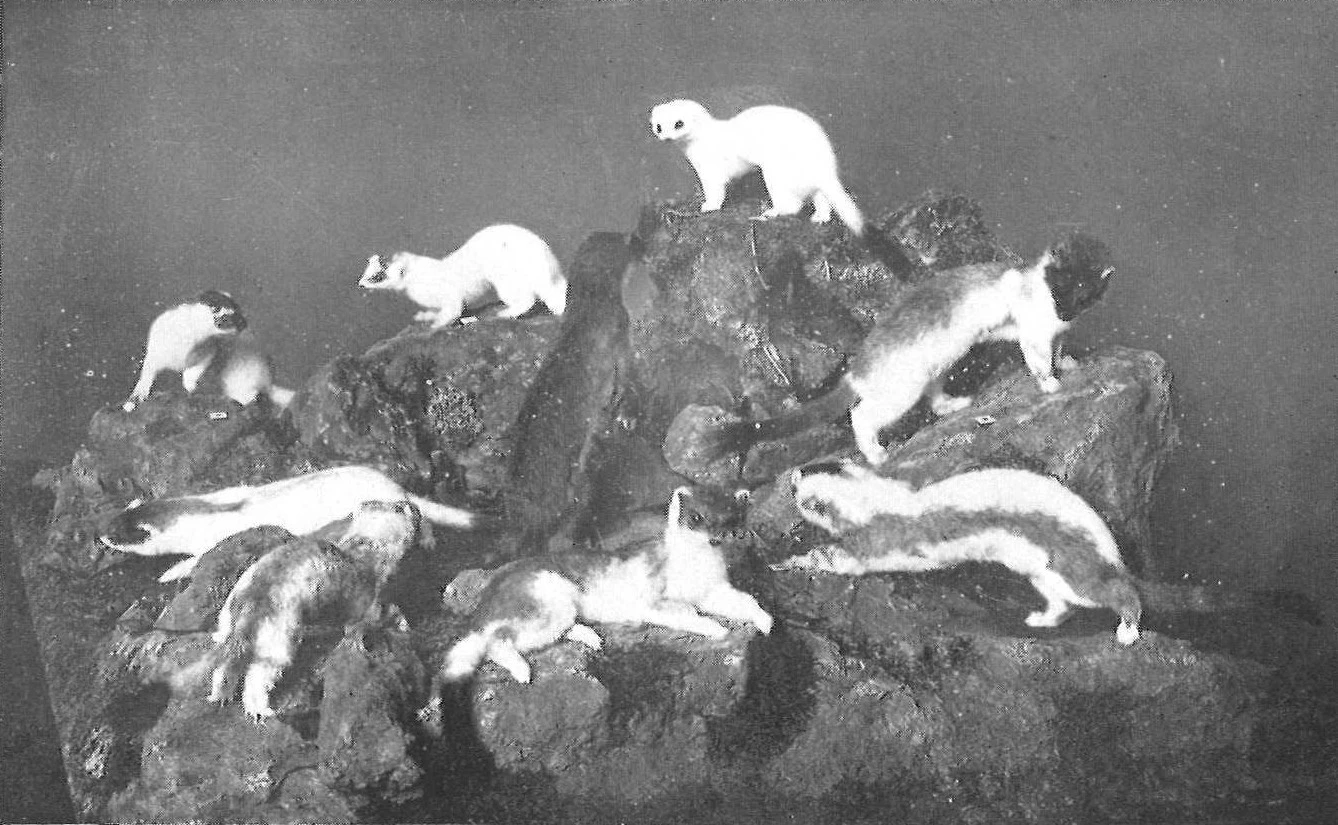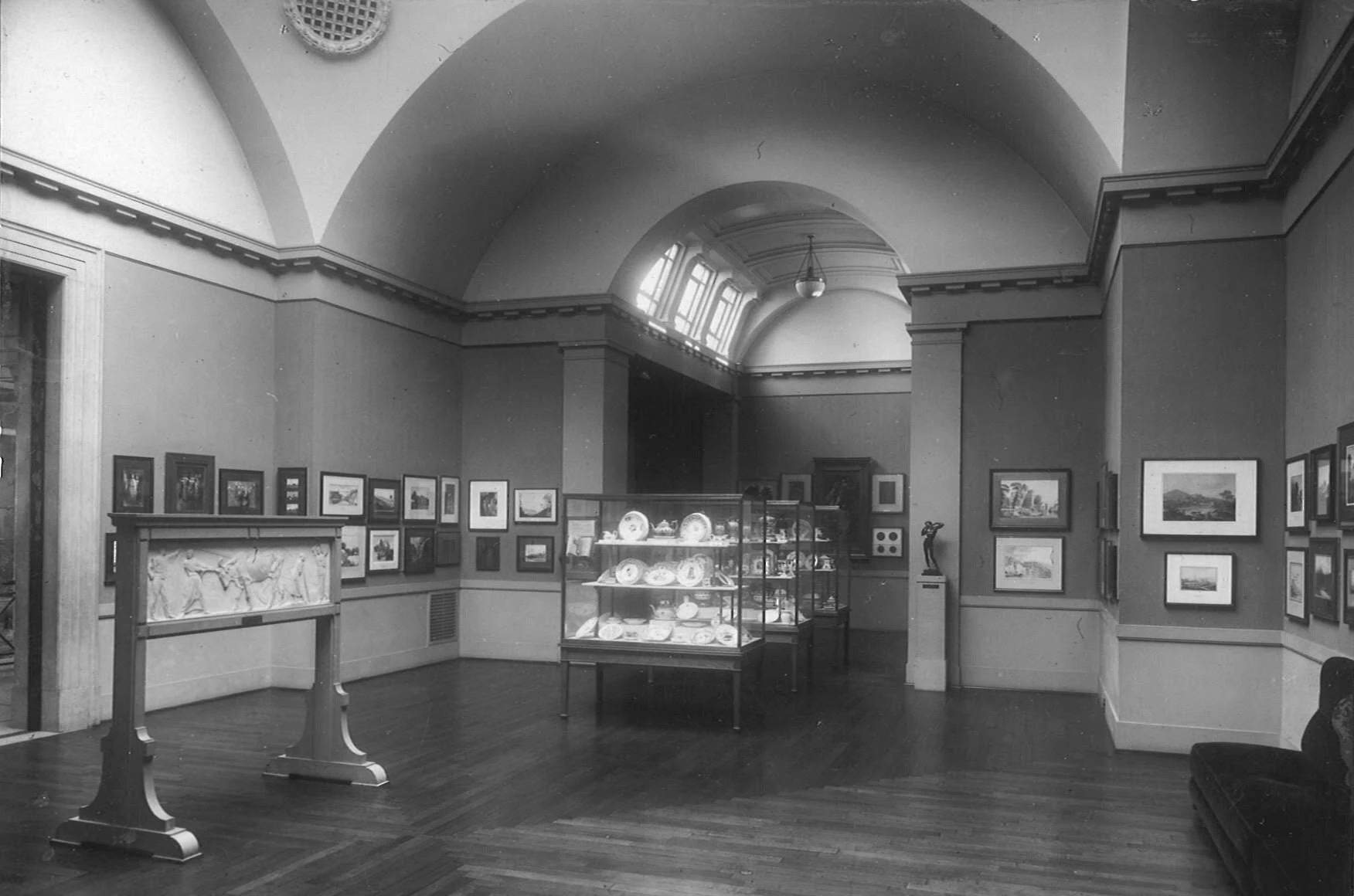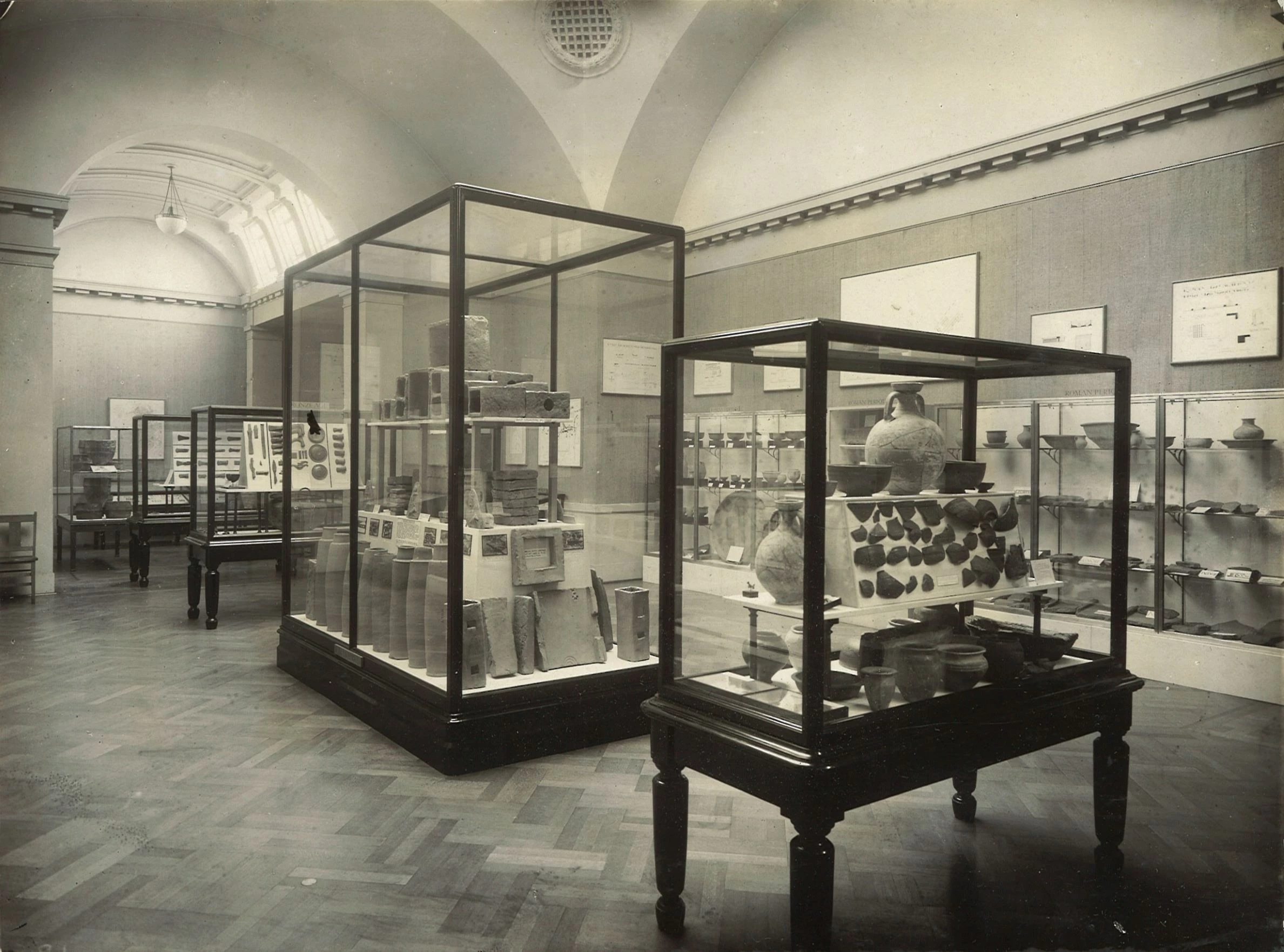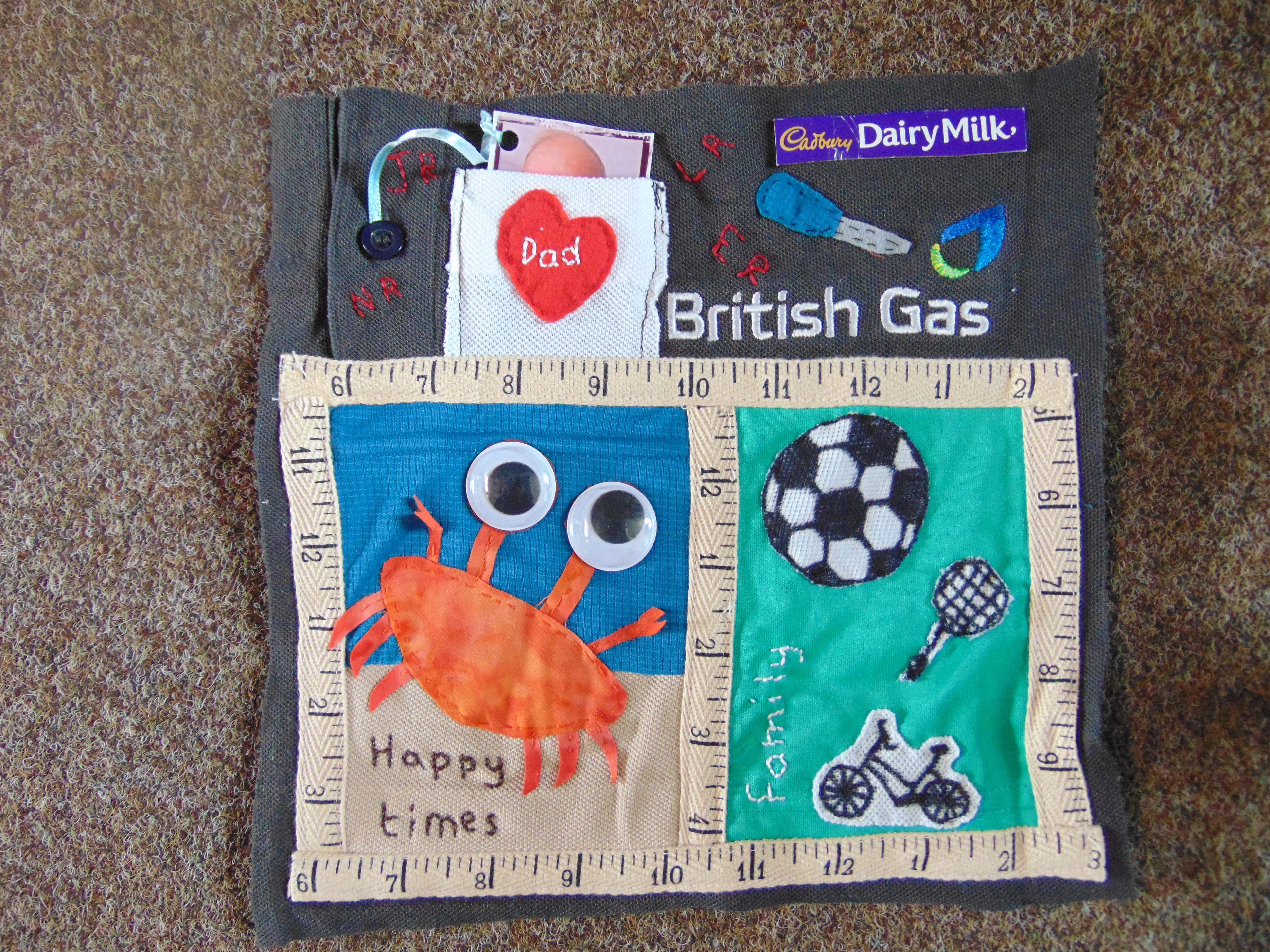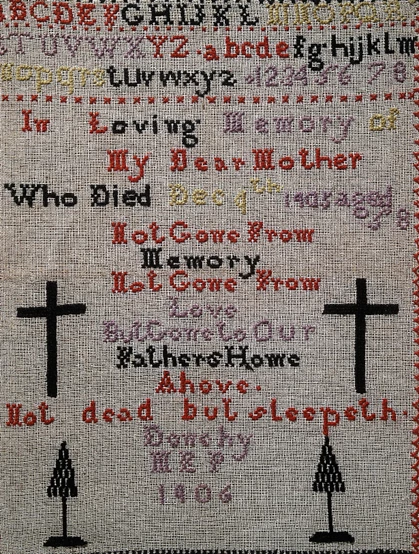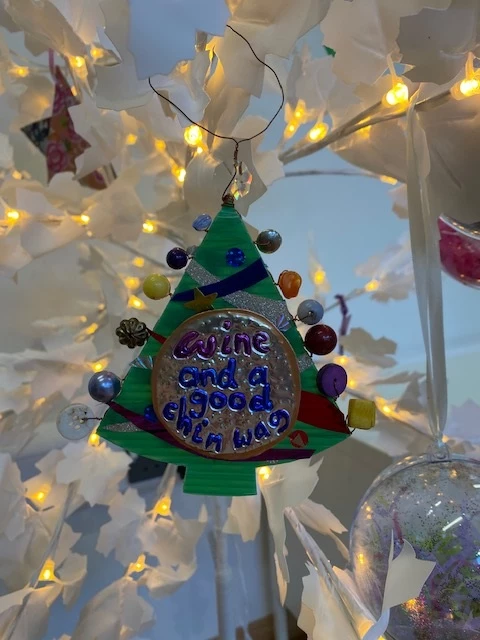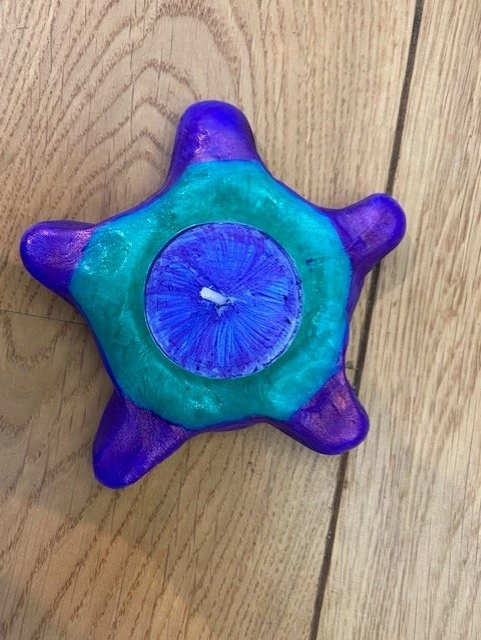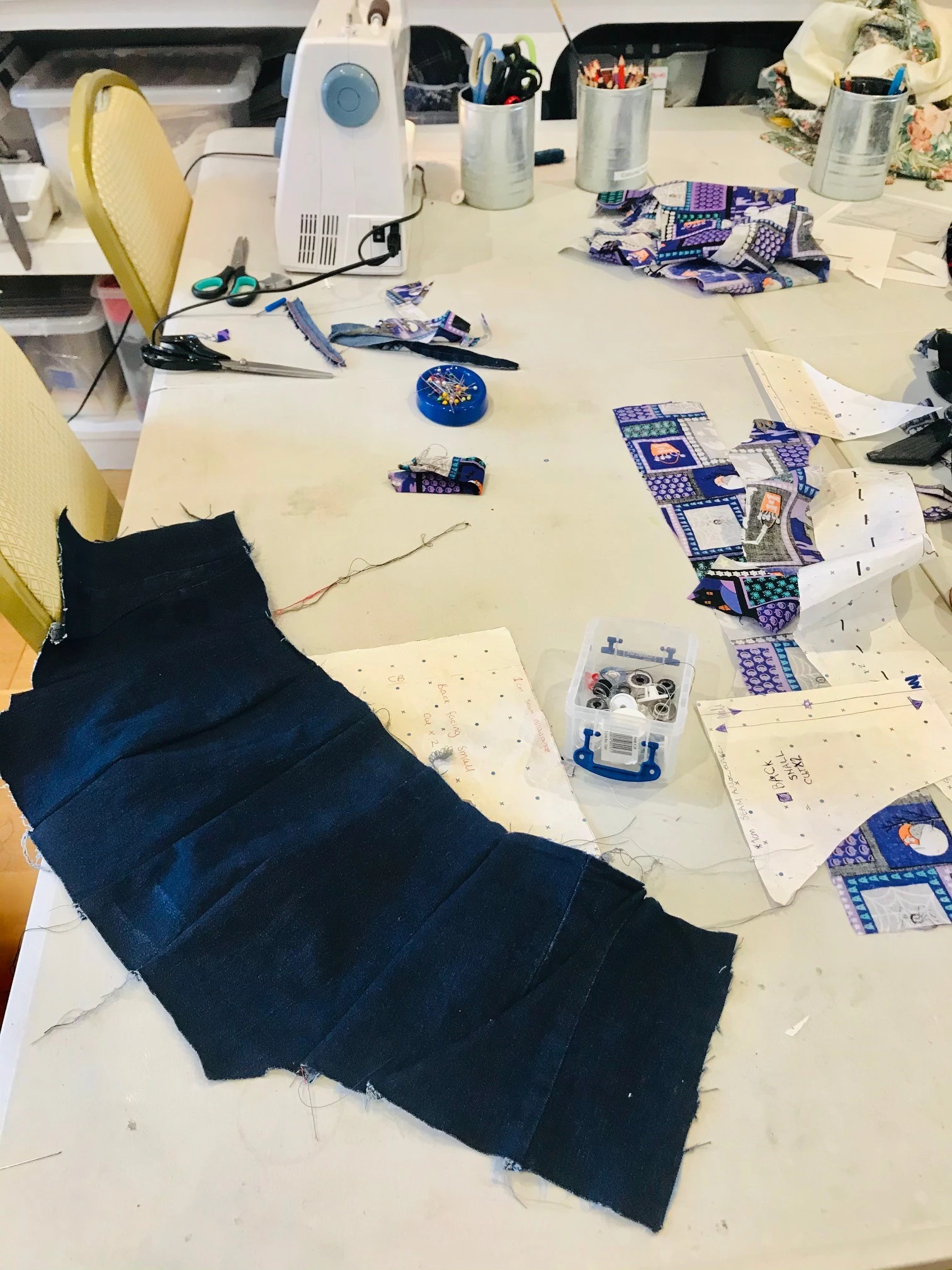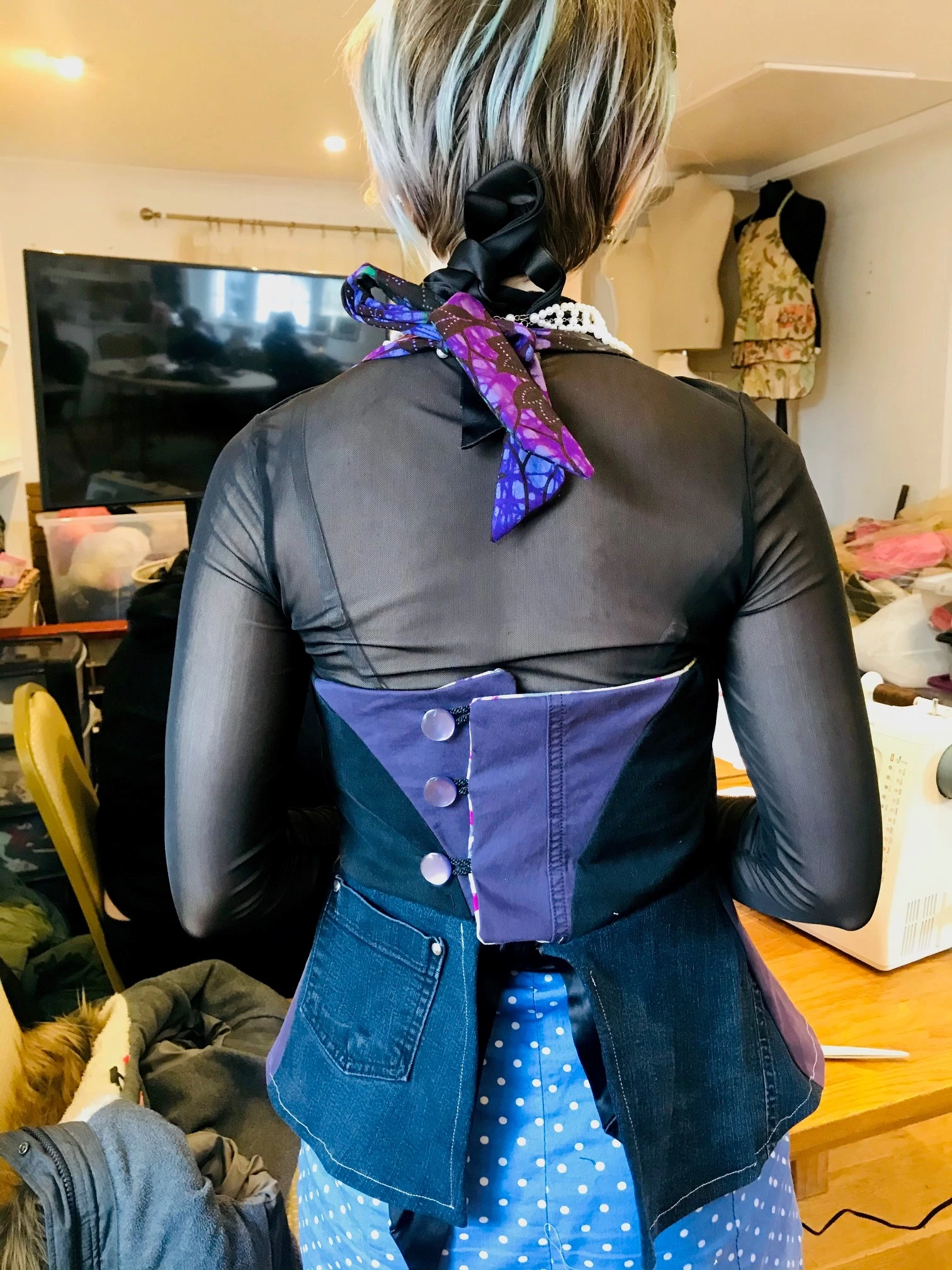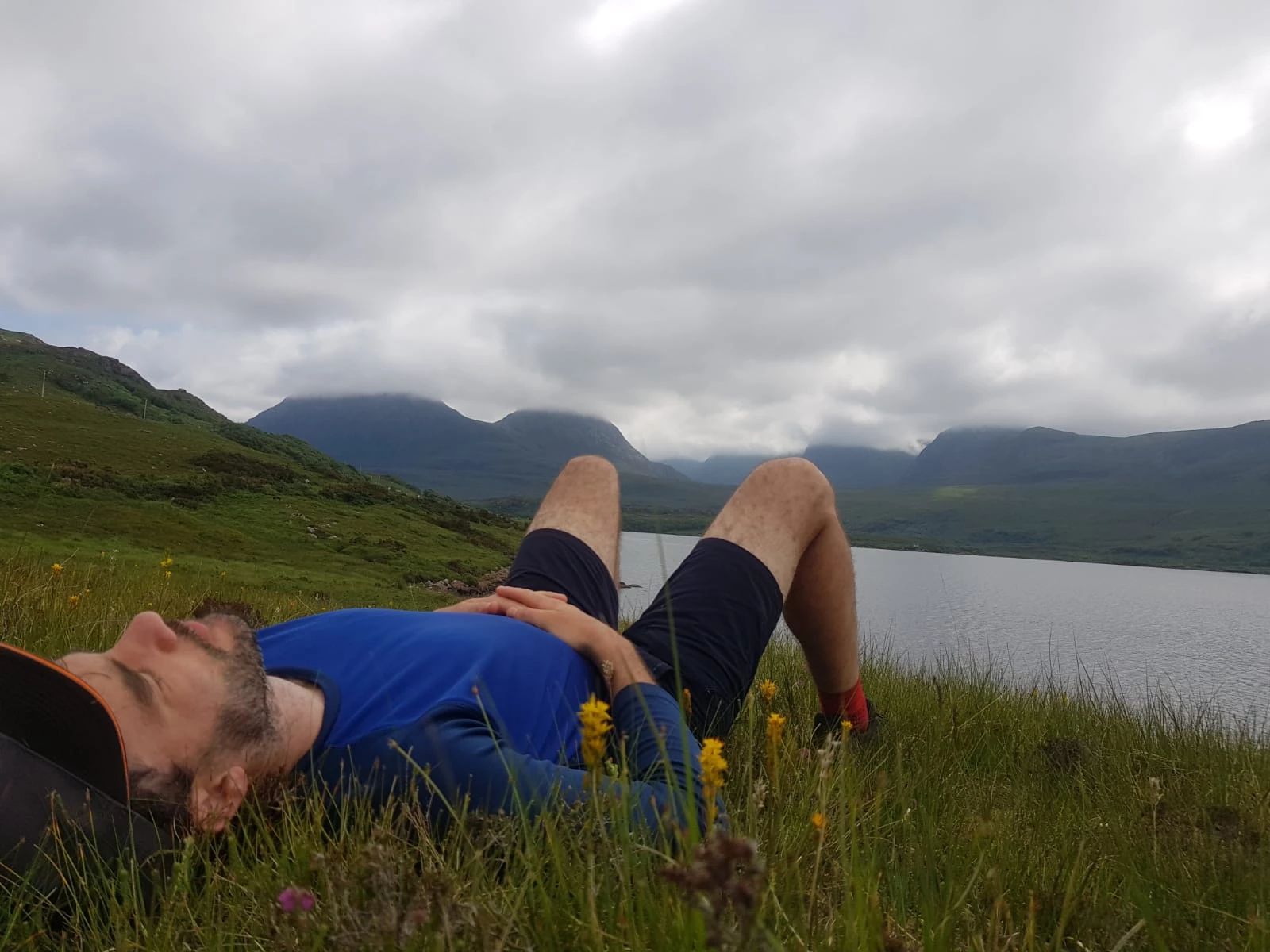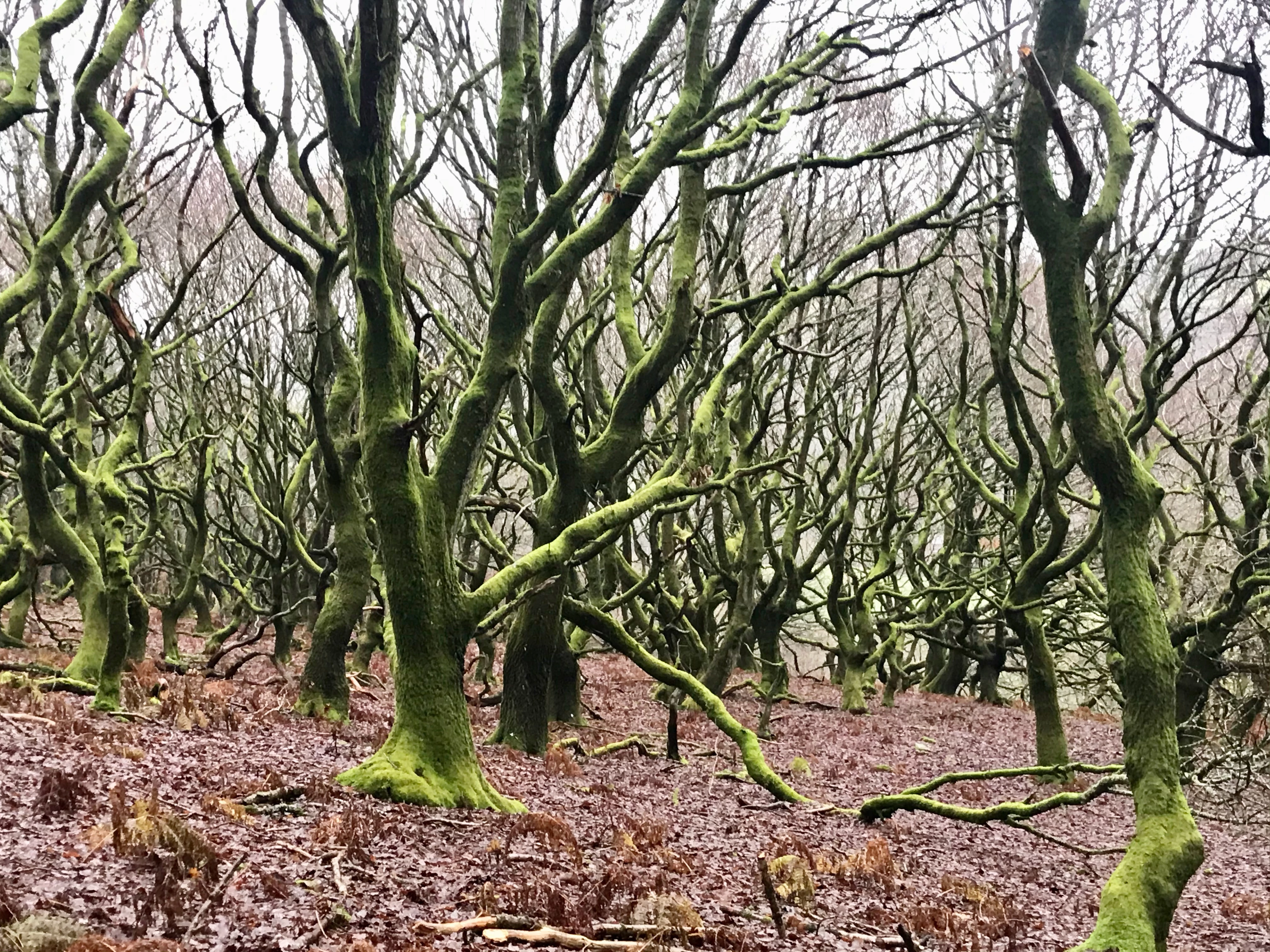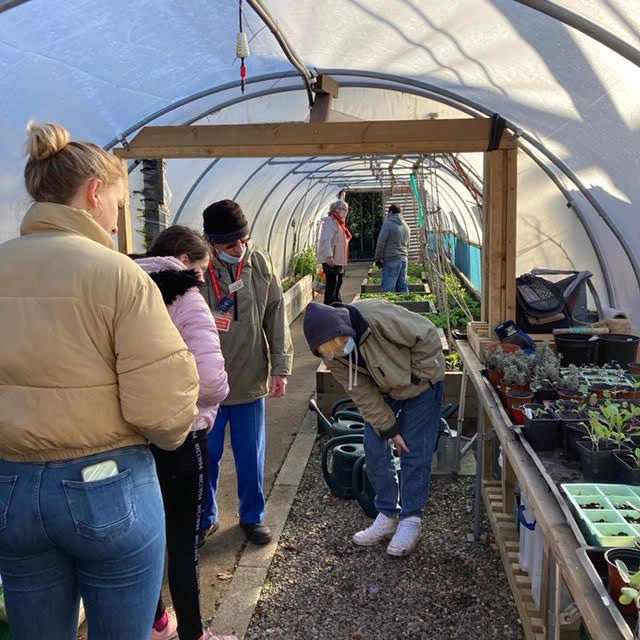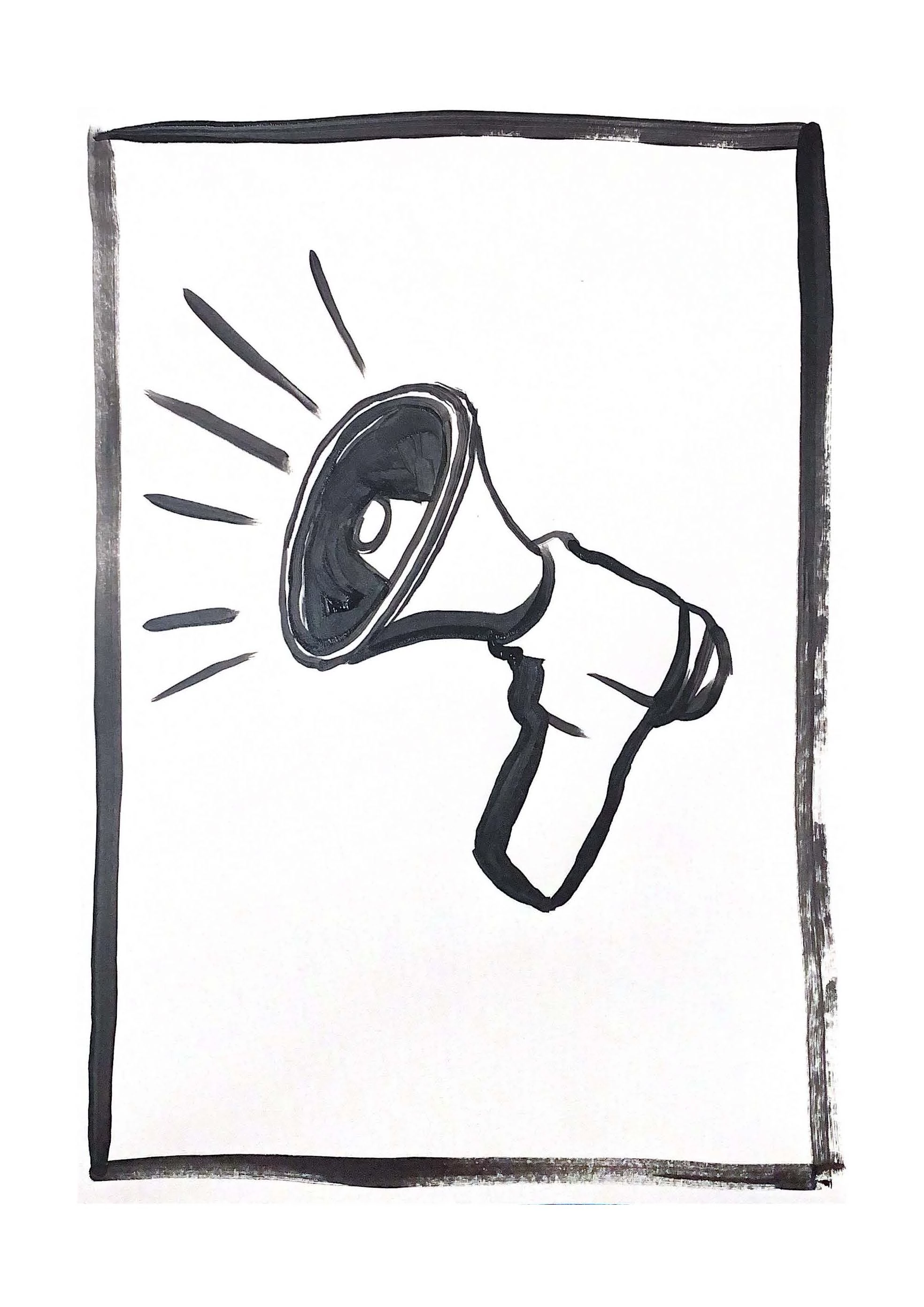Agor yr Amgueddfa Genedlaethol yn Hydref 1922
, 28 Hydref 2022
Ar 28 Hydref byddwn yn dathlu can mlynedd ers i Amgueddfa Cymru agor ei drysau i’r cyhoedd am y tro cyntaf. Er mai yn 2007 oedd canmlwyddiant swyddogol yr Amgueddfa, yn nodi sefydlu’r Amgueddfa o dan Siarter Frenhinol yn 1907, roedd y daith i’w hagor yn broses lawer arafach, gyda chryn oedi, yr amharwyd arni gan anferthedd y Rhyfel Mawr.
Ar ôl caniatáu’r Siarter, cyflogwyd penseiri i ddylunio’r adeilad newydd a gosodwyd y Garreg Sylfaen gan Siôr V ar 26 Mehefin 1912. Y bwriad gwreiddiol oedd cwblhau’r adeilad fesul cam, felly codwyd digon o arian i ddechrau ar y rhan ddeheuol (yn cynnwys y Brif Neuadd) o’r adeilad.
Gosod y Garreg Sylfaen, 26 Mehefin 1912
Pan ddechreuodd y rhyfel yn 1914, parhaodd y gwaith i ddechrau, fel y dengys ffotograffau o 1915, ond cyn hir roedd diffyg deunyddiau adeiladu (yn enwedig dur a phlwm) a llafurwyr yn golygu y bu’n rhaid atal y gwaith. Pan ailddechreuodd ar ôl diwedd y rhyfel, roedd yr hinsawdd yn wahanol iawn. Profodd Prydain ddiweithdra a thlodi difrifol, a phlymiodd y wlad i ddirwasgiad o ganlyniad.
Adeiladu adeilad yr Amgueddfa ym Mharc Cathays, 1915
Yn erbyn y cefndir hwn, hyd yn oed gyda gwaith adeiladu yn parhau i fynd rhagddo, agorwyd rhan orllewinol y Brif Neuadd i’r cyhoedd ar 28 Hydref 1922. Bedwar diwrnod ynghynt roedd y byrddau hysbysu o amgylch yr adeilad wedi cael eu tynnu i ffwrdd, ac er na chynhaliwyd seremoni ffurfiol ar yr adeg honno, daeth Llys Llywodraethwyr yr Amgueddfa ar ymweliad arolygu, cyn mynychu cinio yn Neuadd y Ddinas gyda’r Arglwydd Faer ar y diwrnod cynt.
Golygfa o’r tu allan i’r Amgueddfa o’r de-orllewin
Yn ystod y pymtheng mlynedd ers ei sefydlu roedd yr Amgueddfa wedi bod yn cyflogi staff ac adeiladu casgliadau yn raddol. Ni chynhyrchwyd arweinlyfrau ar gyfer yr agoriad anffurfiol; ni chyhoeddwyd yr arweinlyfr cyntaf i’r casgliadau tan y flwyddyn ganlynol, ond mae erthyglau a ffotograffau a gyhoeddwyd yn y papurau lleol yn rhoi syniad inni o’r hyn y byddai’r ymwelwyr cyntaf hynny â’r Amgueddfa wedi ei weld.
Golygfa o’r Brif Neuadd yn edrych tuag at y grisiau gorllewinol
Yn y Brif Neuadd roedd cerfluniau mawr megis Y Gusan gan Auguste Rodin ac Ioan Fedyddiwr gan William Goscombe John. O’r Brif Neuadd gallai ymwelwyr fynd i Oriel Glanely (a elwir bellach yn Ganolfan Ddarganfod Clore) i weld casgliadau Daeareg, yn enwedig creigiau a mwynau a geir yng Nghymru. Yn yr oriel sgwâr ar hyd ochr arall y Neuadd roedd y casgliadau Sŵoleg, yn yr un man ag y maent o hyd, er bod yr arddangosiadau wedi cael eu diweddaru ers y dyddiau cynnar hynny!
Arddangosfa carlwm o’r Oriel Sŵoleg
I fyny’r grisiau yn Oriel Pyke Thompson (a elwir bellach yn Oriel 18), y prif bethau i’w gweld oedd darluniau dyfrlliw a fu’n eiddo i James Pyke Thompson ar un adeg a chasgliad o gerameg Cymreig a roddwyd gan Wilfred de Winton yn 1918. Ar draws y bont yn yr oriel sgwâr, roedd arddangosfa o baentiadau olew o’r Rhodd Menelaus.
Oriel Pyke Thompson yn 1925
Nid oedd gan yr Adran Archaeoleg ei horiel ei hun ar adeg agor yr Amgueddfa yn 1922, gan y byddai’n rhan o’r adeilad a oedd yn dal i gael ei adeiladu. Ond, flwyddyn yn ddiweddarach cafodd gwrthrychau o’r casgliadau Archaeoleg eu harddangos yn y Brif Neuadd ac ar y balconïau, cyn symud i ofod mwy parhaol yn oriel flaen y llawr cyntaf (sydd bellach yn gartref i gasgliad o gerameg Cymreig). Erbyn 1925, mewn oriel yng nghefn y Brif Neuadd, roeddent hefyd wedi gosod yr Oriel Hynafion, gydag adluniadau o gegin Gymreig ac ystafell wely Cymreig, ac yn oriel flaen y de-ddwyrain ar y llawr gwaelod roedd y casgliadau Botaneg (sef ardal yr Herbariwm Cymreig bellach).
Yr Oriel Archaeoleg yn 1925
Parhaodd cynllun yr Amgueddfa fel hyn nes i’r orielau gael eu had-drefnu’n helaeth fel rhan o waith adeiladu’r adain ddwyreiniol yn y 1930au. Gwnaethpwyd newidiadau pellach ar hyd yr 20fed ganrif wrth i’r adain orllewinol gael ei hadeiladu yn y 1960au, ac yna ychwanegwyd orielau’r Bloc Canol yn ystod y 1990au cynnar. Os oes gennych chi ddiddordeb mewn dysgu rhagor am hanes Amgueddfa Cymru, bydd rhagor o flogiau ac erthyglau yn ymddangos ar ein gwefan dros y misoedd nesaf.
